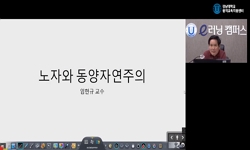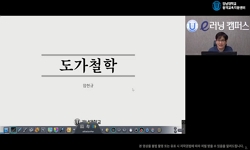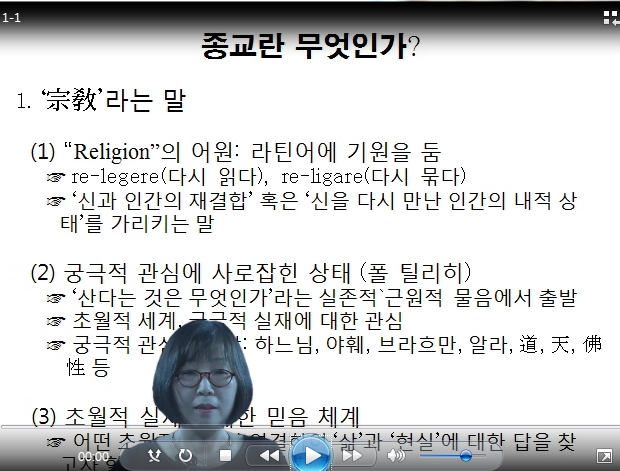This thesis examines Taoism's talismans which were done to defeat or cure infectious diseases in the current Covid-19 situation, In particular, the use of talismans to fight or cure infectious diseases can be found in the 『Daofahuiyuan(道法會元)...
http://chineseinput.net/에서 pinyin(병음)방식으로 중국어를 변환할 수 있습니다.
변환된 중국어를 복사하여 사용하시면 됩니다.
- 中文 을 입력하시려면 zhongwen을 입력하시고 space를누르시면됩니다.
- 北京 을 입력하시려면 beijing을 입력하시고 space를 누르시면 됩니다.

전염병 치료로서 도교 부적 - 청미파의 『道法會元』을 중심으로 = Taoist talisman as an infectious disease treatment -Based on the 淸微(Cheong mei) faction's 『Daofahuiyuan(道法會元)』
한글로보기https://www.riss.kr/link?id=A107547005
-
저자
강충구 (경기대학교)
- 발행기관
- 학술지명
- 권호사항
-
발행연도
2021
-
작성언어
Korean
-
주제어
Taoism ; talisman ; murrain(plague) ; cure ; Cheongmeipa(淸微派) ; leifa(雷法) ; 『Daofahuiyuan(道法會元)』 ; 도교 ; 부적 ; 온역(전염병) ; 수련(수행) ; 치병 ; 청미파 ; 뢰법(우레를 부리는 법) ; 『道法會元』
-
등재정보
KCI등재
-
자료형태
학술저널
- 발행기관 URL
-
수록면
9-46(38쪽)
-
KCI 피인용횟수
0
- 제공처
-
0
상세조회 -
0
다운로드
부가정보
다국어 초록 (Multilingual Abstract)
This thesis examines Taoism's talismans which were done to defeat or cure infectious diseases in the current Covid-19 situation, In particular, the use of talismans to fight or cure infectious diseases can be found in the 『Daofahuiyuan(道法會元)』 of Cheongmeipa(淸微派). I reviewed the contents of the epidemic eradication using the talisman of the ‘Cheong mei(淸微) faction’ at a time when the epidemic of Covid-19 is threatening the world, and explained the meaning. After the early Taoism became religious, shamanistic treatment using talismans was an important religious practice to gather believers. As Taoism developed, talismans were an important religious element not only in the rites but also in the individual performance of Taoism. In this development of Taoism, the shamanistic treatment using talismans gradually disappeared, and the meaning of talismans was highlighted in rituals and individual practicing asceticism. However the Cheong mei(淸微) faction, which belongs to Fulu(符箓) faction in the Song(宋) Dynasty, embraces the god of thunder(雷神) and sorcery amulets, which are folk beliefs, reinterpret them Taoist and actively use them to treat diseases. By the time of the Song(宋) Dynasty, it was common to draw and use talismans based on internal training in the factions of Taoism whether 符箓(Fulu) clan or 內丹(Nae Dan) clan. Through internal training, the Taoist matches the energy in his body with the energy of the universe, and when he is in this state, he draws talismans with the united energy(一氣). The united energy of innateness indwells to the talisman painted like this, and the Taoist combines his own gods and energy with the patient’s god and energy so that the patient can respond to them and fight off the disease. In this process, the Taoist brings in the ‘commander god’(神將) that can handle the case, and relies on the strength of these commander god to fight off the epidemic. Talismans used for certain diseases have a common design. We call that desing, ‘Baozhang(寶章)’. This design is shown by the child of ‘Spritual Taoist World’(神仙界) when the Taoist is full of energy through internal training, and the design is common to the talismans used for certain disease. The belief that the Taoist can cure diseases or defeat infectious diseases through talisman is based on the fact that the human body is regarded as a small world, and that the world and the human body are based on a homogeneous energy. It is the talisman that the Taoist extrinsicized the energy while his energy and the energy of the world united through internal training, and the talisman has the energy of such a universe, so they are considered to have the power to treat diseases. Also, the gods who were called along with the talisman have the power to treat diseases. Taoist talismans have different meanings from those of folk belief. Talisman of folk belief is painted by a psychic medium who is connected with supernatural thing. But the talisman of Taoism means that it is exogenized with the spirit of the universe and the spirit of Taoism combined when a Taoist calls cammander gods through the ritual and internal training.
국문 초록 (Abstract)
이 글은 현 코로나-19 상황에서, 전염병을 물리치거나 치료하기 위해 행한 도교의 부적에 대하여 살펴 본 것이다. 특히 전염병을 물리치거나 치료하기 위해 부적을 사용한 내용은 도교 청미...
이 글은 현 코로나-19 상황에서, 전염병을 물리치거나 치료하기 위해 행한 도교의 부적에 대하여 살펴 본 것이다. 특히 전염병을 물리치거나 치료하기 위해 부적을 사용한 내용은 도교 청미파의 『道法會元』에서 찾아 볼 수 있다. 코로나-19라는 전염병이 전세계를 강타하고 있는 현 상황에서 청미파의 부적을 이용한 전염병 퇴치의 내용을 검토해, 그 의미를 해명하였다. 초기 도교가 교단화할 때부터 부적을 이용한 주술적 치료는 신도를 모으는 중요한 종교적 실천이었다. 부적은 도교가 발전함에 따라, 제초의례뿐만 아니라 도사의 개인적인 수행에서도 중요한 종교적 요소였다. 이러한 도교의 발전에서 부적을 이용한 주술적 치료는 점차 사라지고, 의례와 개인의 수행에서 부적의 의미가 부각되었다. 그러나 송나라 시기 부록파인 청미파는 민간의 신앙인 뇌신과 주술적 부적들 수용해, 도교적으로 재해석하고 이를 질병을 치료하는데 적극적으로 사용한다. 송대에 이르면 내단파이든 부록파이든 도교의 교파에서는 내단수련을 기초로 하면서 부적을 그리고 사용하는 것이 일반화된다. 내단수련을 통해 도사는 자신의 몸 속 원기를 우주의 원기와 일치해내고, 이 상태가 되면 一氣를 운용해 부적을 그린다. 이렇게 그려진 부적에는 선천의 일기가 깃들고, 도사는 자신의 신과 기를 상대방의 신과 기와 합하게 하여 상대방을 감응하게 하여 질병을 물리친다. 이 과정에서 도사는 해당 질병에 맞는 신장들을 불러오고, 이 신장들의 힘에 의지해 전염병을 물리친다. 특정한 질병에 사용되는 부적들에는 공통의 도안이 있다. 그 도안을 寶章이라고 부른다. 이는 도사가 내단수련을 통해 원기가 충만해지면, 신선계의 동자가 보여주는 도안을 의미하고, 이 도안은 특정한 질병에 사용되는 부적에 공통적으로 쓰인다. 도사가 부적을 통해 질병을 치료하거나 전염병을 물리칠 수 있다는 믿음은 인체를 소천지로 보고, 천지와 인체가 동질적인 기를 바탕으로 하고 있다는 점을 전제한 것이다. 도사가 내단수련의 상태에서 자신의 원기와 천지의 원기가 합일한 상태에서 그 기를 외재화한 것이 부적이고, 부적은 그러한 우주의 원기가 깃든 것이기에 질병에 대한 치료의 힘을 가진 것으로 본다. 또한 부적과 함께 불려나온 신들 역시 질병에 대한 치료의 힘을 갖는다고 본다. 도교의 부적은 민간신앙의 부적과는 그 의미가 다르다. 민간신앙의 부적은 영매가 접신에 의해 그리는 것이라면, 도교의 부적은 도사의 의례와 내단수련을 통해 도교의 신장들을 불러오고 우주의 원기와 도사의 원기가 합일된 상태에서 그 원기가 외재화한 것을 의미한다.
참고문헌 (Reference)
1 "한어대사전"
2 최수빈, "천서(天書)인가 인서(人書)인가 - 도교 경전의 특수성과 대중화 문제에 대한 소고 -" 한국도교문화학회 (50) : 43-88, 2019
3 胡孚琛, "중화도교대사전" 중국사회과학출판사 1995
4 최수빈, "중국도교의 관점에서 살펴본 동학의 사상과 수행 : 도교 내단(內丹) 및 부주(符呪) 수행과의 연관성을 중심으로" 동학학회 (20) : 333-375, 2010
5 모종감, "중국도교사" 예문서원 2015
6 胡孚琛, "위진신선도교 -포박자 내편 연구" 인민출판사 1991
7 이택주, "비전영부경전" 선진문화출판사 1994
8 쫑자오펑, "도교사전" 파라아카데미 2018
9 사가데 요시노부, "도교백과" 파라아카데미 2018
10 잔스촹, "도교문화15강" 알마출판사 2011
1 "한어대사전"
2 최수빈, "천서(天書)인가 인서(人書)인가 - 도교 경전의 특수성과 대중화 문제에 대한 소고 -" 한국도교문화학회 (50) : 43-88, 2019
3 胡孚琛, "중화도교대사전" 중국사회과학출판사 1995
4 최수빈, "중국도교의 관점에서 살펴본 동학의 사상과 수행 : 도교 내단(內丹) 및 부주(符呪) 수행과의 연관성을 중심으로" 동학학회 (20) : 333-375, 2010
5 모종감, "중국도교사" 예문서원 2015
6 胡孚琛, "위진신선도교 -포박자 내편 연구" 인민출판사 1991
7 이택주, "비전영부경전" 선진문화출판사 1994
8 쫑자오펑, "도교사전" 파라아카데미 2018
9 사가데 요시노부, "도교백과" 파라아카데미 2018
10 잔스촹, "도교문화15강" 알마출판사 2011
11 최수빈, "도교 상청파의 「대동진경」 연구: 몸, 우주, 그리고 신비주의적 수행" 서강대학교 대학원 2003
12 李俊涛, "雲篆天書:道敎符圖藝術對現代視覺設計的啓示" 사천대학 2006
13 "道法會元, 中華道藏" 華夏出版社 2004
14 李俊涛, "道敎符圖之星辰符號探秘" (1) : 2006
15 山中文雄, "道敎の敎團と儀禮" 雄山閣出版 2000
16 張澤洪, "道敎 齋醮符呪儀式" 파촉서사 1999
17 姚周輝, "神秘的符籙呪語" 광서인민출판사 2004
18 "沖虛通妙侍宸王先生家, 正統道藏"
19 잔스촹, "易學與道敎符號揭秘" 중국서점 2001
20 王明, "太平經合校" 중화서국 1997
21 顔 開, "中國巫道 “符籙”與當代設計應用" 中央美術學院 2007
22 I. Robinet, "Taoist Meditation" State Univ. of New York Press 1993
23 Livia Kohn, "Daoism Handbook" Brill 2000
동일학술지(권/호) 다른 논문
-
팬데믹 시대를 살아가는 노인의 삶의 질: 노년학 이론에 대한 도교적 이해를 중심으로
- 한국도교문화학회
- 염지혜
- 2021
- KCI등재
-
한비자에서 통치자와 피통치자 본성론의 간극과 통합 - 순자와 노자의 영향을 중심으로
- 한국도교문화학회
- 정단비
- 2021
- KCI등재
-
- 한국도교문화학회
- 오일훈
- 2021
- KCI등재
-
- 한국도교문화학회
- 고남식
- 2021
- KCI등재
분석정보
인용정보 인용지수 설명보기
학술지 이력
| 연월일 | 이력구분 | 이력상세 | 등재구분 |
|---|---|---|---|
| 2027 | 평가예정 | 재인증평가 신청대상 (재인증) | |
| 2021-01-01 | 평가 | 등재학술지 유지 (재인증) |  |
| 2018-01-01 | 평가 | 등재학술지 유지 (등재유지) |  |
| 2015-01-01 | 평가 | 등재학술지 유지 (등재유지) |  |
| 2011-01-01 | 평가 | 등재학술지 유지 (등재유지) |  |
| 2009-01-01 | 평가 | 등재학술지 유지 (등재유지) |  |
| 2006-01-01 | 평가 | 등재학술지 선정 (등재후보2차) |  |
| 2005-01-01 | 평가 | 등재후보 1차 PASS (등재후보1차) |  |
| 2004-01-01 | 평가 | 등재후보 1차 FAIL (등재후보1차) |  |
| 2003-01-01 | 평가 | 등재후보학술지 선정 (신규평가) |  |
학술지 인용정보
| 기준연도 | WOS-KCI 통합IF(2년) | KCIF(2년) | KCIF(3년) |
|---|---|---|---|
| 2016 | 0.57 | 0.57 | 0.6 |
| KCIF(4년) | KCIF(5년) | 중심성지수(3년) | 즉시성지수 |
| 0.54 | 0.5 | 1.665 | 0.08 |




 DBpia
DBpia






